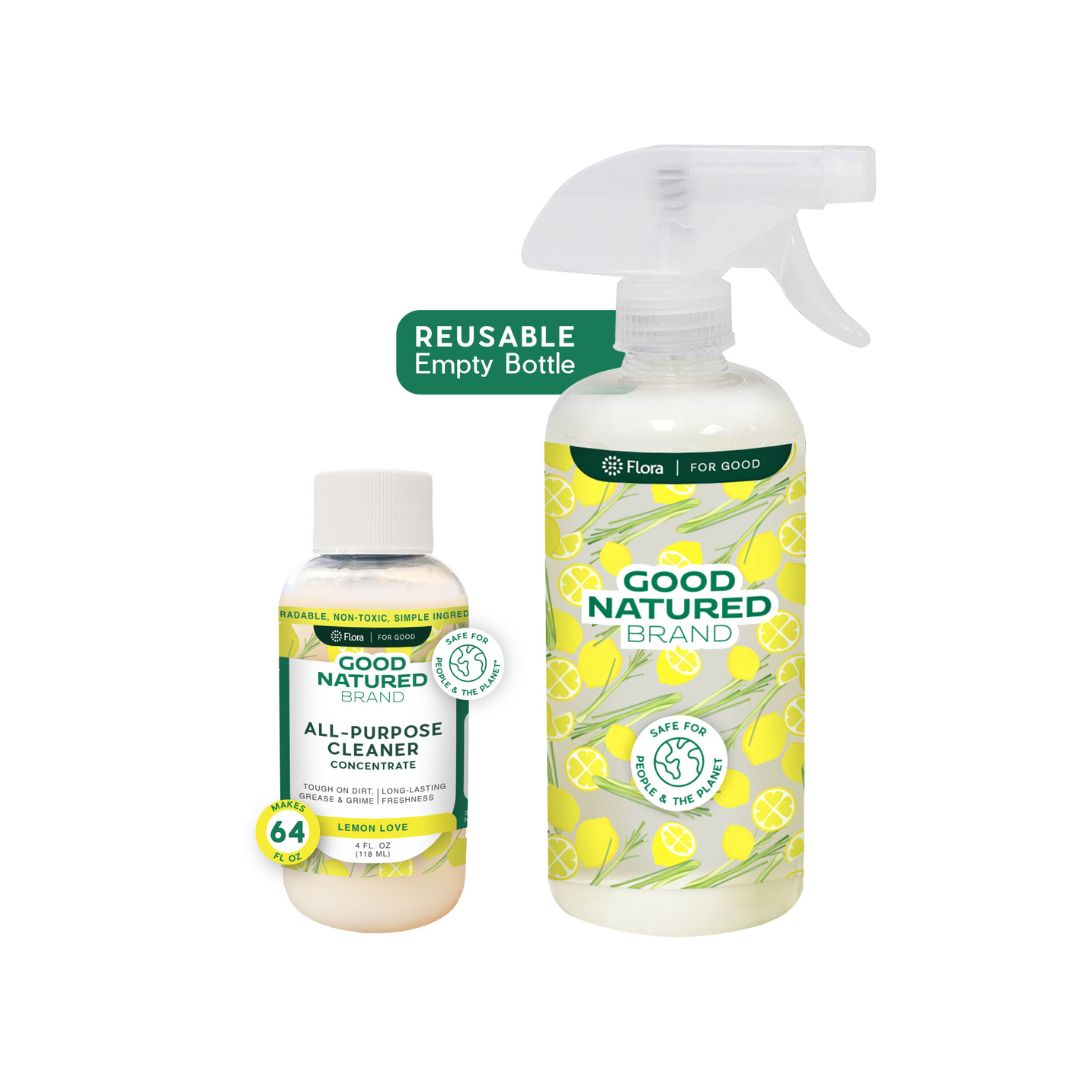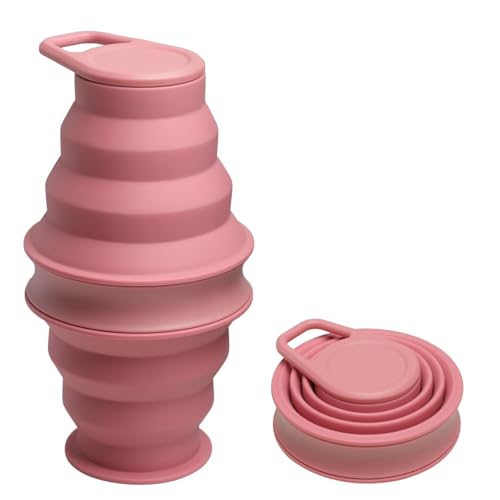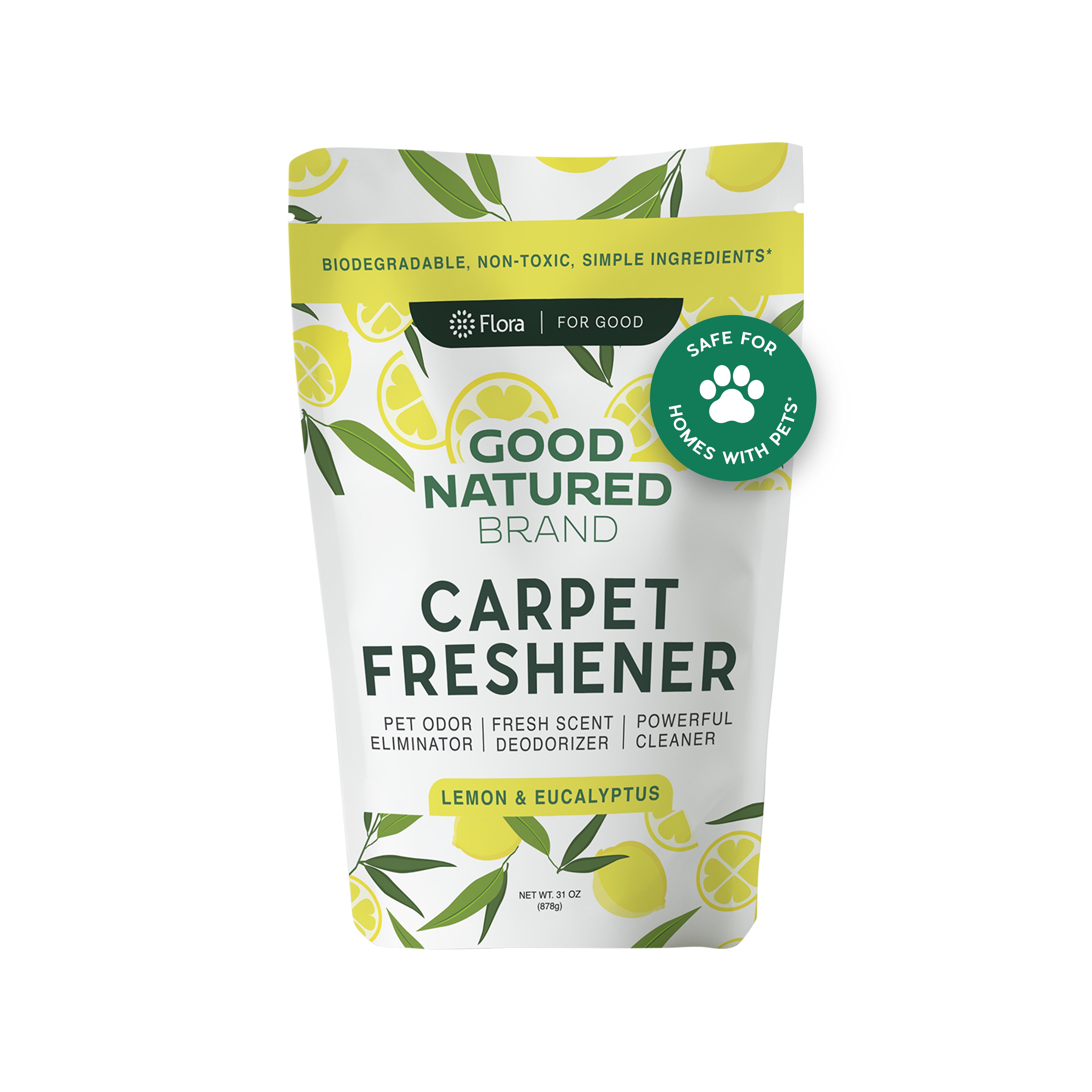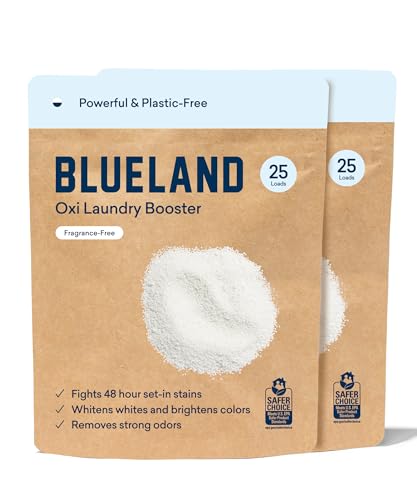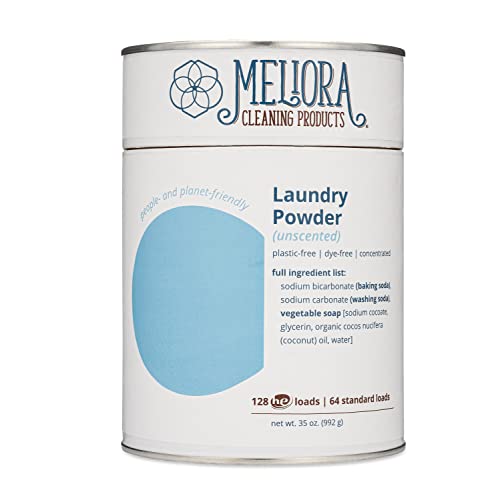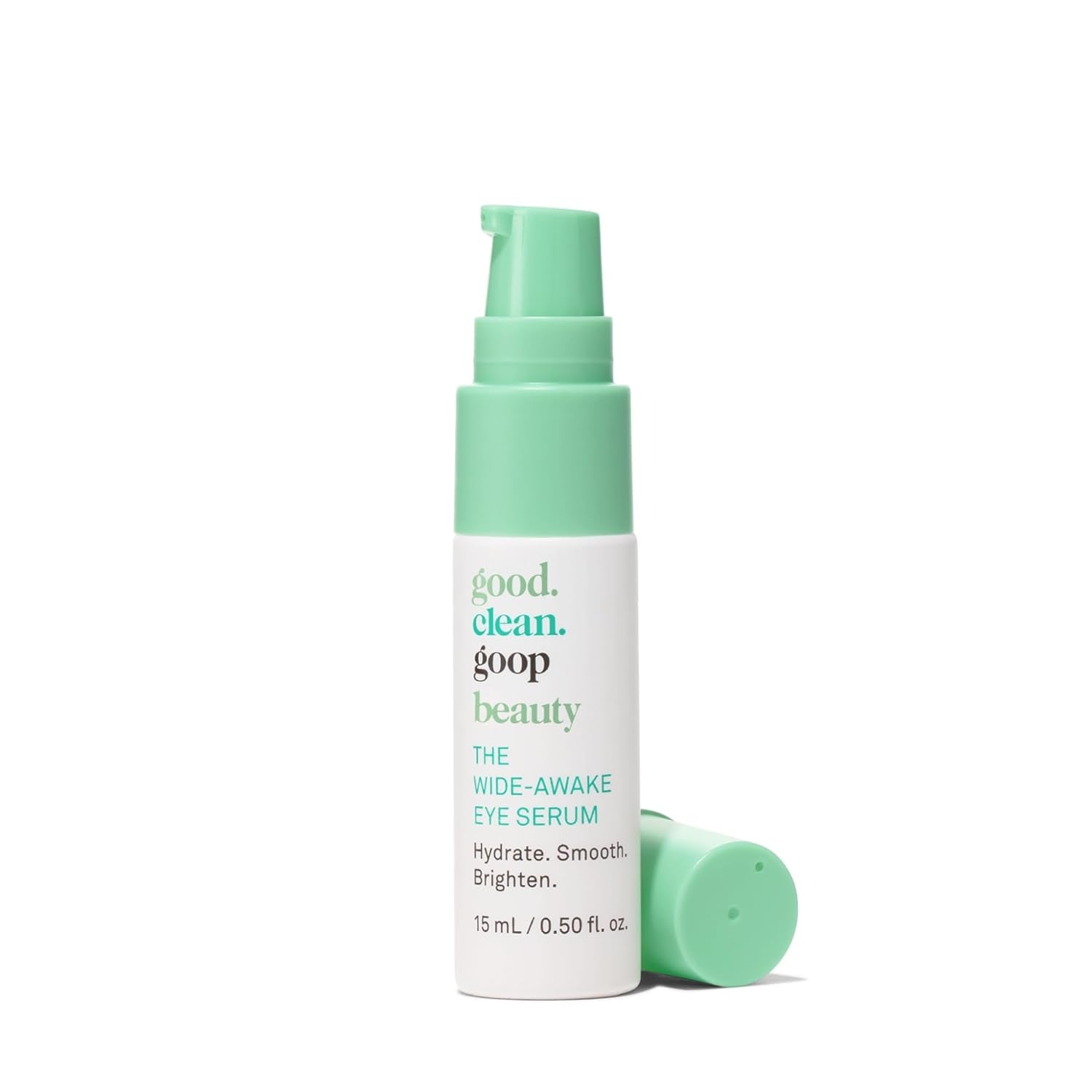
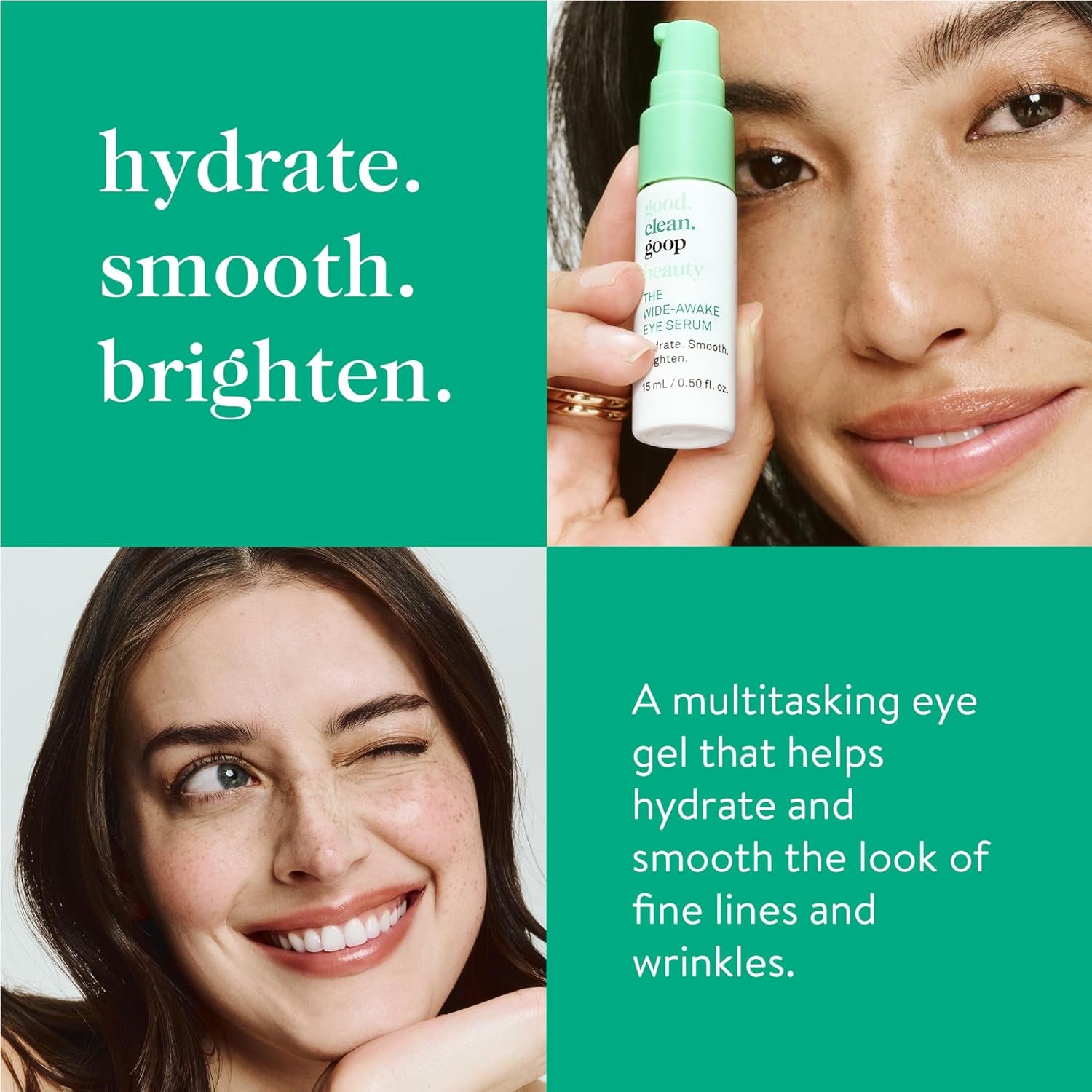
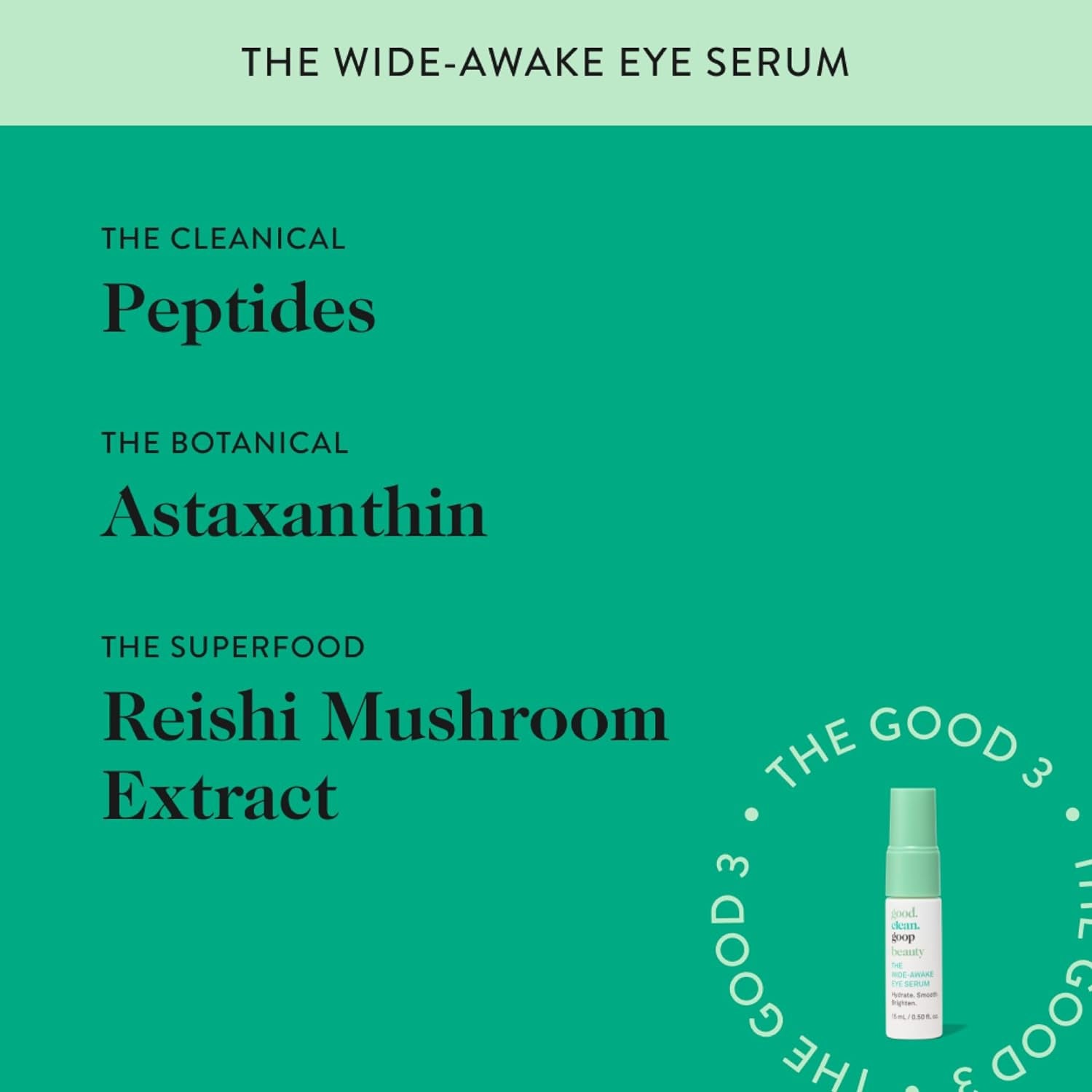
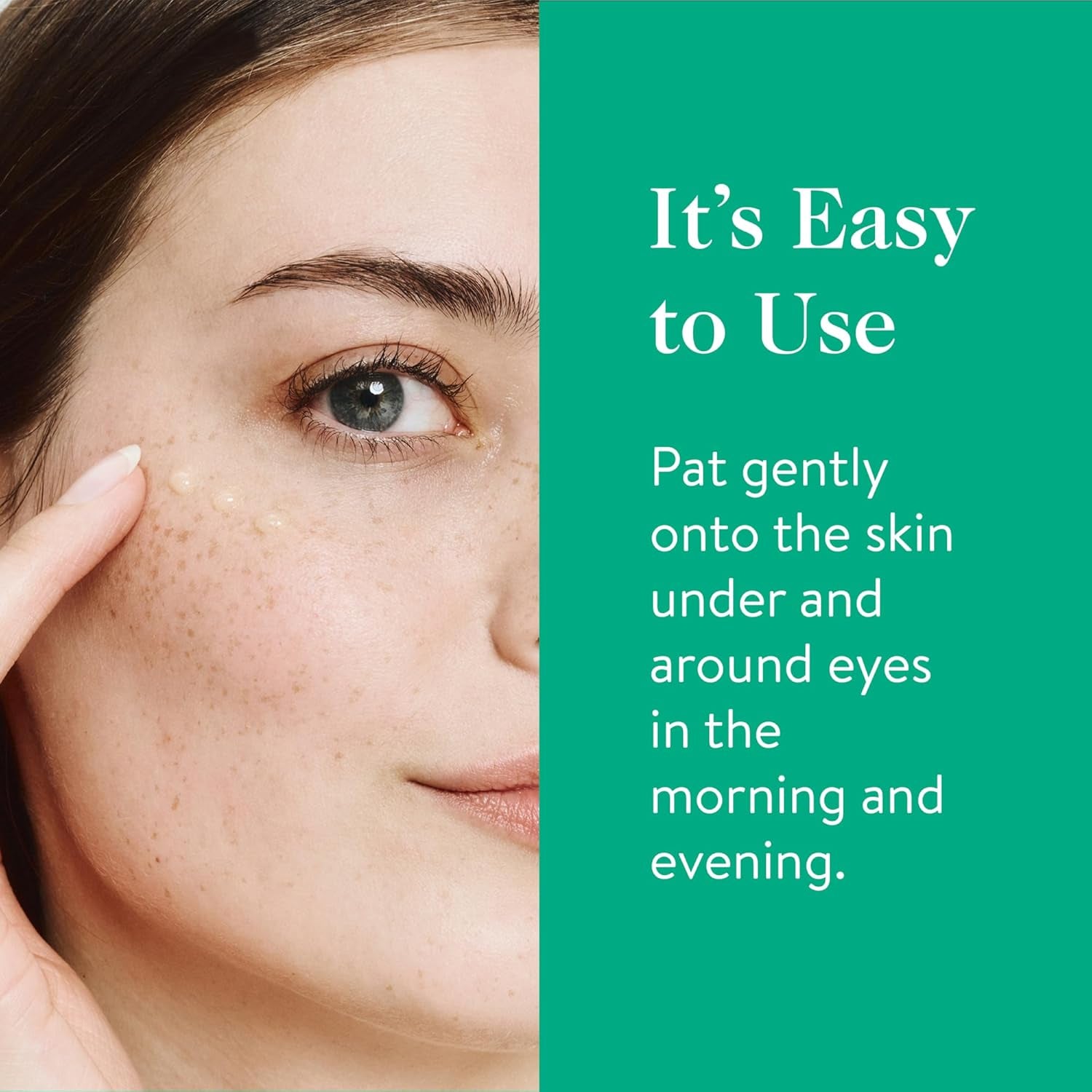
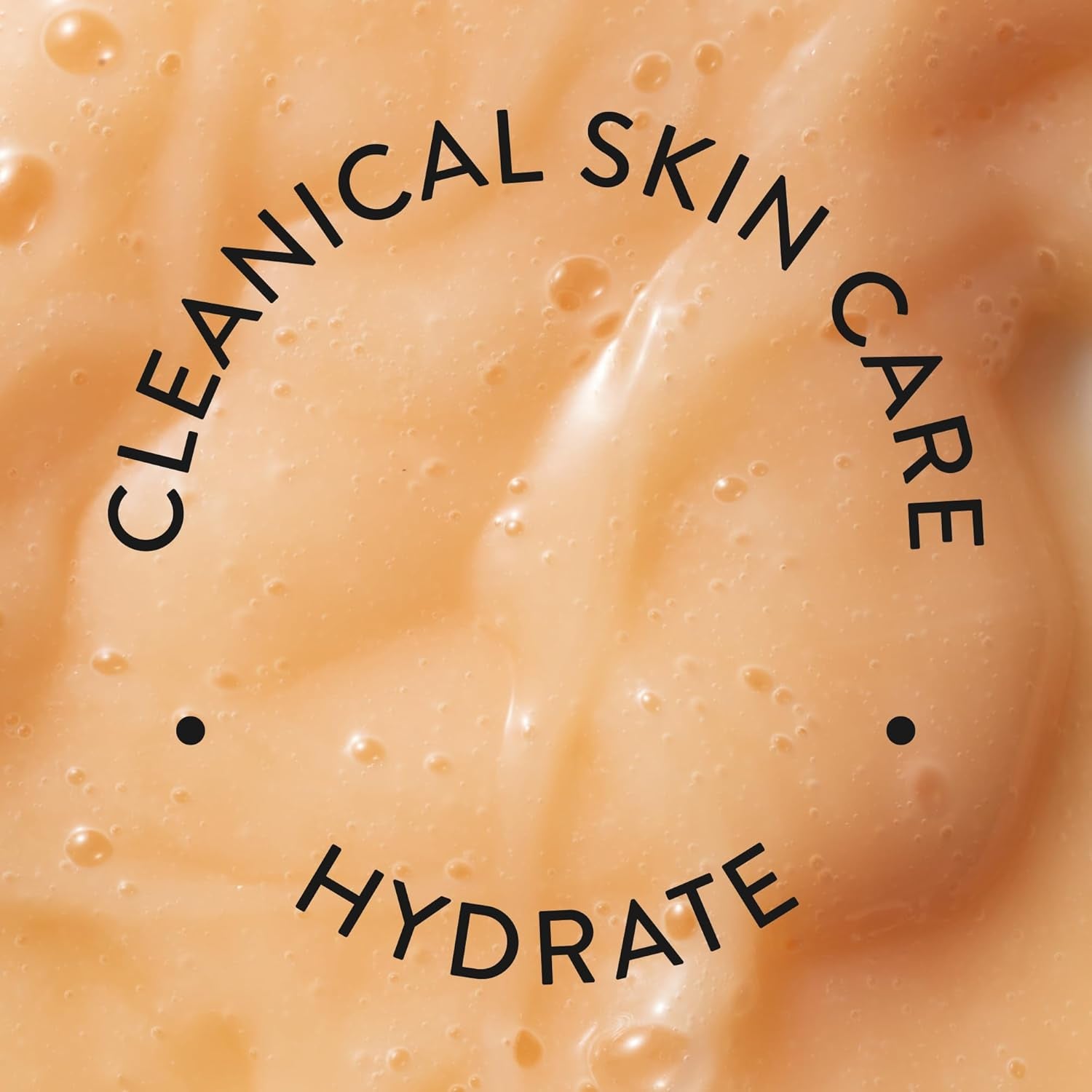
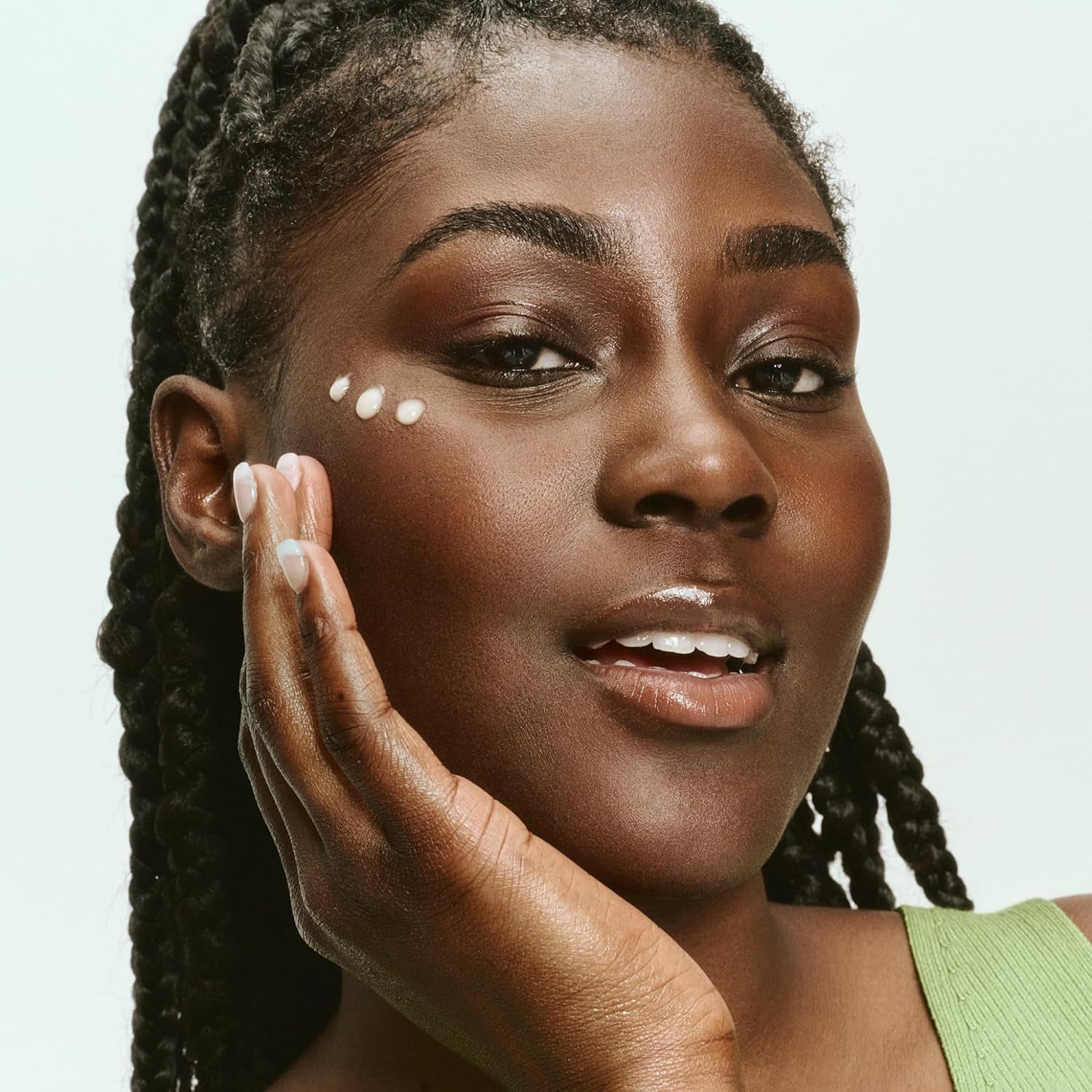
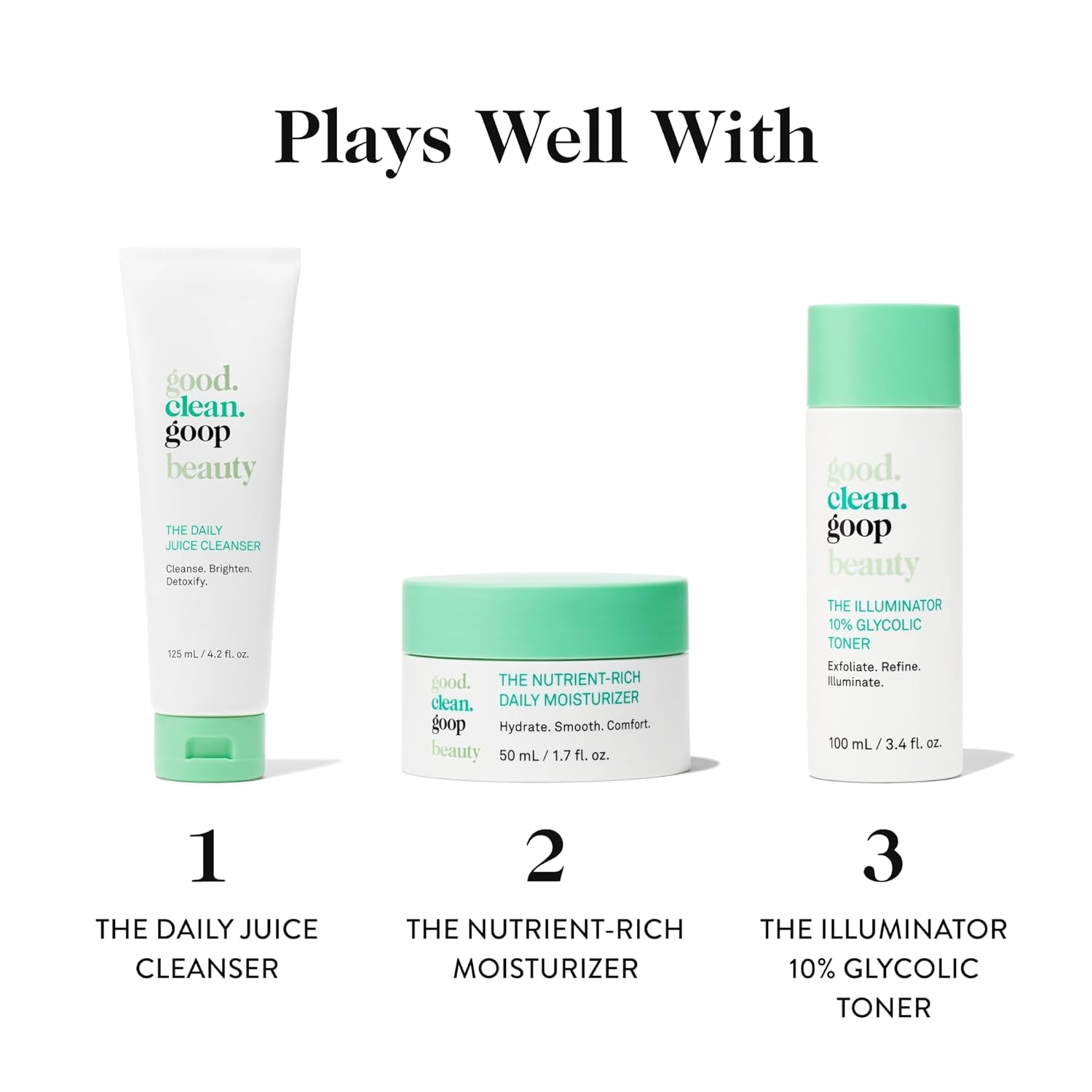
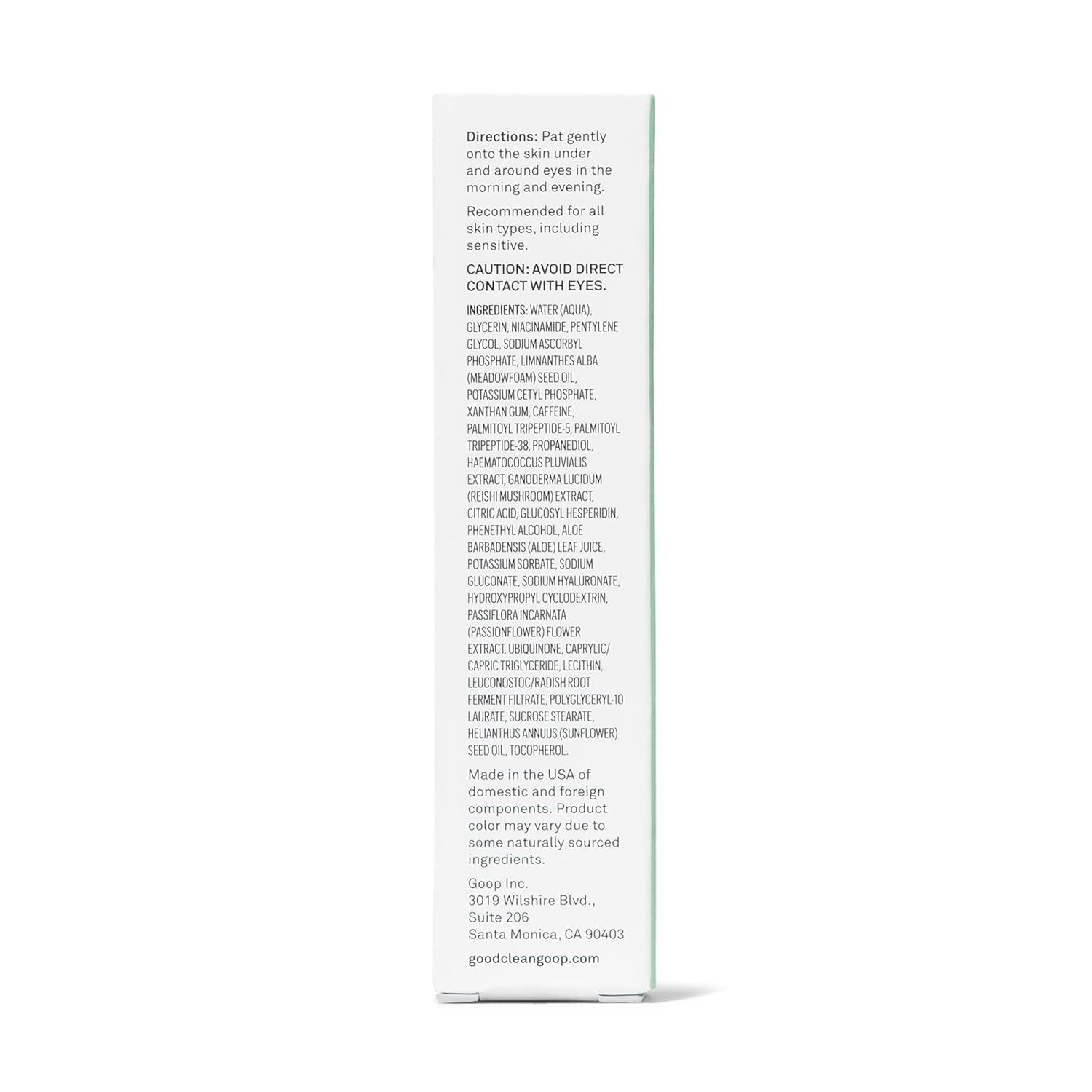
good.clean.goop Eye Serum - Reduces Dark Circles & Fine Lines, Vegan - 0.5 oz Gel with Peptides


Lecithin
Medium RiskLecithin is a naturally occurring lipid found in various plant and animal tissues, primarily composed of phospholipids. It serves as an emulsifier, stabilizing mixtures of oil and water, and is commonly used in food, cosmetics, and pharmaceuticals to improve texture and extend shelf life.
Sustai Insights
Lecithin provides functional benefits as an effective emulsifier and stabilizer, enhancing product texture while being sustainably sourced from natural origins. Health risks are generally low, with moderate concerns regarding allergies and immunotoxicity but minimal cancer or reproductive toxicity risks. Environmental hazards are limited, and it is not classified as a pollutant. Regulatory bodies impose few restrictions. Overall, lecithin presents a medium risk, suggesting caution in usage, especially for sensitive individuals. Alternatives include sunflower lecithin or other plant-based emulsifiers that may offer similar benefits with reduced allergenic potential.
Haematococcus Pluvialis (Algae) Extract
Medium RiskHaematococcus pluvialis extract is derived from a microalga known for its high concentration of astaxanthin, a carotenoid pigment. It is often utilized in cosmetic formulations for its antioxidant properties and potential UV protection. The extract can be incorporated into various products including skin care and dietary supplements.
Sustai Insights
Haematococcus pluvialis extract offers functional benefits, particularly as an antioxidant and UV protectant, contributing positively to skin health. However, contamination concerns are notable, and while health risks related to carcinogenicity, allergies, and reproductive toxicity are low, potential environmental risks, such as bioaccumulation, warrant attention. Regulatory concerns regarding contamination have been raised, leading to a moderate risk assessment overall. Safe usage practices should be observed, and alternatives like other plant-derived antioxidants could be considered.
Phenethyl Alcohol
Medium RiskPhenethyl alcohol is an aromatic alcohol commonly used in cosmetic formulations. It functions primarily as a solvent and a preservative, contributing to product stability and enhancing the fragrance profile.
Sustai Insights
Phenethyl alcohol exhibits functional benefits as a preservative and solvent in cosmetic products, with some sustainability credentials due to its natural origin. However, it is associated with moderate allergy concerns and low risks of carcinogenicity and reproductive toxicity. Regulatory bodies have imposed specific use restrictions, highlighting the need for cautious application. Overall, the risk assessment indicates a medium risk level, warranting safe usage practices and consideration of alternatives like natural preservatives.
Ubiquinone
Medium RiskUbiquinone, also known as coenzyme Q10, is a naturally occurring antioxidant found in the body, primarily in the mitochondria. It plays a crucial role in energy production and is commonly used in skincare and dietary supplements for its potential health benefits and ability to support cellular function.
Sustai Insights
Ubiquinone provides functional benefits as an antioxidant, aiding in energy production and skin health. It is generally considered safe, with low risks for carcinogenicity, allergies, and immunotoxicity, although moderate concerns exist regarding developmental and reproductive toxicity and certain usage restrictions. Environmental impacts are minimal, with no significant bioaccumulation noted. Regulatory bodies do not impose severe restrictions, but users should adhere to recommended concentrations. Overall, this ingredient presents a medium risk level, and alternatives like alpha-lipoic acid may be considered for those seeking different antioxidant options.
Glycerin
Medium RiskGlycerin (also called glycerol) is a naturally occurring compound commonly used in personal care and cosmetic products. It functions as a humectant, attracting moisture to the skin, and is also utilized as a solvent and emollient to enhance product texture and stability.
Sustai Insights
Glycerin is valued for its effective moisturizing properties and biodegradability, making it a widely accepted ingredient in formulations. It poses low health risks, including low concerns for carcinogenicity and allergies. However, moderate use restrictions exist due to regulatory guidelines. While glycerin does not significantly contribute to environmental pollution, its production process should be ethically sourced. Overall, glycerin holds a medium risk level, emphasizing the importance of safe usage practices and considering sustainable alternatives.
Citric Acid
Medium RiskCitric acid is an alpha hydroxy acid used in personal care products primarily for its role as a pH adjuster and natural preservative. It occurs naturally in citrus fruits and is commonly utilized in various formulations for its chelating properties and mild exfoliation benefits.
Sustai Insights
Citric acid offers functional benefits as an effective preservative and pH stabilizer, contributing to product longevity and stability. It is biodegradable and derived from renewable sources. Health risks are low, with minimal concerns regarding carcinogenicity, allergies, and reproductive toxicity. However, moderate use restrictions exist due to potential irritation at high concentrations. Environmental risks are limited, as citric acid is not known to accumulate in ecosystems. Regulatory agencies have no significant advisories against its use. Overall, it is assessed as a medium-risk ingredient, with safe usage practices recommended and alternatives available.
Potassium Sorbate
Medium RiskPotassium sorbate is a potassium salt of sorbic acid, primarily used as a preservative in food and cosmetic products. It inhibits the growth of molds, yeast, and some bacteria, extending the shelf life of products. It is commonly found in various formulations due to its effectiveness and low toxicity.
Sustai Insights
Potassium sorbate serves as an effective preservative, preventing microbial growth in food and cosmetic products, which is vital for safety and longevity. Although it has a low risk of carcinogenicity and developmental toxicity, there is a moderate concern regarding allergies and immunotoxicity. Environmentally, it poses minimal risks as it is not significantly bioaccumulative. Regulatory agencies have verified its use, although some products may face restrictions. Overall, it is assessed as a medium risk ingredient, with safe usage practices recommended, and alternatives such as natural preservatives could be considered.
Sucrose Stearate
Low RiskSucrose stearate is a monoester of stearic acid and sucrose, commonly used as an emulsifier in cosmetic and personal care products. It helps to stabilize formulations by allowing oil and water phases to mix effectively, enhancing product texture and consistency.
Sustai Insights
Sucrose stearate offers functional benefits as an emulsifier, aiding in product stability and enhancing texture. It is considered to have low health risks, including low concerns for carcinogenicity, allergies, and reproductive toxicity. Environmentally, it poses minimal risks and is not flagged by regulatory bodies for use restrictions. Overall, the risk level associated with sucrose stearate is low, making it a suitable ingredient in formulations.
Glucosyl Hesperidin
Low RiskGlucosyl hesperidin is a glucose ether of hesperidin, primarily used in cosmetic and skincare products for its potential antioxidant and skin-conditioning properties. It functions as a humectant, helping to retain moisture and improve the texture of formulations.
Sustai Insights
Glucosyl hesperidin offers functional benefits such as moisture retention and skin conditioning, contributing to product efficacy. It is generally recognized as safe, with low concerns regarding health risks, including cancer and allergies. Environmental impact appears minimal, with no known pollutants or bioaccumulation. Regulatory bodies do not impose restrictions on its use. Overall, the risk level associated with glucosyl hesperidin is low, supporting safe usage in cosmetic formulations.
Propanediol
Low RiskPropanediol is a glycol compound commonly used in cosmetic and personal care products as a solvent, humectant, and skin-conditioning agent. It serves to enhance the texture and moisture retention of formulations, contributing to overall product efficacy.
Sustai Insights
Propanediol offers functional benefits such as effective moisture retention and improved product application. It is considered low-risk in terms of health concerns, with minimal associations with carcinogenicity, allergies, or reproductive toxicity. Environmentally, it has low pollutant potential and is not bioaccumulative. Regulatory bodies have not placed restrictions on its use. Despite concerns regarding enhanced skin absorption and potential endocrine disruption, the overall assessment indicates low risk. Safe usage practices should be followed, and alternatives like glycerin or other plant-based humectants can be considered.
Palmitoyl Tripeptide 5
Low RiskPalmitoyl tripeptide-5 mimics the action of the body's own natural peptides, promoting skin elasticity and reducing the appearance of wrinkles. It is commonly used in cosmetic formulations for its firming and anti-aging properties.
Sustai Insights
Palmitoyl tripeptide-5 offers functional benefits as a skin-conditioning agent, enhancing elasticity and promoting a youthful appearance. Scientific assessments indicate low health risks, with no significant concerns regarding carcinogenicity, allergies, or reproductive toxicity. Environmental impacts are minimal, and it is not listed in any regulatory restrictions. Safe usage practices include adherence to cosmetic formulation guidelines. Overall, this ingredient presents a low risk profile, making it a favorable choice in skincare applications.
Leuconostoc/Radish Root Ferment Filtrate
Low RiskLeuconostoc/radish root ferment filtrate is a natural fermentation product derived from radish roots, commonly used in skincare for its potential preservative properties and skin-conditioning benefits. It functions by harnessing the metabolic activity of Leuconostoc bacteria to provide a source of beneficial compounds.
Sustai Insights
This ingredient offers functional benefits, primarily as a preservative and skin-conditioning agent, while being biodegradable and sustainably sourced. Health risks are generally low, with no significant concerns regarding carcinogenicity or allergies, though contamination concerns exist. Environmentally, it poses minimal risks, categorized as low overall risk based on current scientific consensus. Safe usage practices are advised, and alternatives may include other natural preservatives like tocopherol or rosemary extract.
Polyglyceryl 10 Laurate
Low RiskPolyglyceryl-10 laurate is an ester of lauric acid and polyglycerin, commonly used as an emulsifier in cosmetic formulations. It serves to stabilize and blend oil and water phases in products, enhancing texture and consistency.
Sustai Insights
Polyglyceryl-10 laurate provides effective emulsification, improving product stability and application. It is considered to have low health risks, with minimal concerns regarding carcinogenicity, allergens, or irritation. Environmentally, it poses low pollutant potential and is not known to bioaccumulate. Regulatory assessments indicate no significant restrictions. Overall, it is classified as low risk based on current scientific evidence, making it a safe choice in cosmetic formulations.
Niacinamide
Low RiskNiacinamide, also known as nicotinamide, is a form of vitamin B3 (niacin) that serves various functions in skincare and cosmetic products. It is often used for its potential benefits in improving skin texture, enhancing moisture retention, and supporting the skin's barrier function.
Sustai Insights
Niacinamide provides functional benefits such as enhancing skin hydration and improving the appearance of uneven skin tone. It is generally recognized as safe, with low concerns regarding carcinogenicity, allergies, or reproductive toxicity. However, enhanced skin absorption may pose risks for sensitive individuals. Regulatory bodies impose few restrictions on its use, and it is considered low risk overall. For safer alternatives, options like panthenol may be considered. Overall, niacinamide is a low-risk ingredient when used appropriately.
Hydroxypropyl Cyclodextrin
Low RiskHydroxypropyl cyclodextrin is a propylene glycol derivative of cyclodextrin, commonly used in cosmetic formulations as a stabilizing and solubilizing agent. It helps enhance the delivery of active ingredients and improve product texture without altering the overall formulation significantly.
Sustai Insights
Hydroxypropyl cyclodextrin serves as an effective solubilizer and stabilizer in cosmetics, facilitating enhanced delivery of active ingredients. It is generally regarded as safe, with low concerns regarding carcinogenicity, allergies, and reproductive toxicity. Environmental impacts are minimal, as it does not exhibit significant pollutant potential or bioaccumulation. However, it is subject to usage restrictions in verified products. Overall, it presents a low risk, making it a suitable choice in cosmetic formulations.
Potassium Cetyl Phosphate
Low RiskPotassium cetyl phosphate is a potassium salt derived from cetyl alcohol and phosphoric acid, primarily used as an emulsifier and stabilizer in cosmetic formulations. It aids in blending oil and water components, enhancing product texture and performance.
Sustai Insights
Potassium cetyl phosphate offers functional benefits as an effective emulsifier, contributing to product stability. It is considered low risk regarding health impacts, with minimal concerns related to cancer, allergies, or reproductive toxicity. Environmentally, it poses low hazards, and there are no significant regulatory restrictions. Safe usage practices should be observed to minimize skin irritation. Alternatives such as glyceryl stearate may provide similar emulsifying properties while enhancing sustainability credentials. Overall, the ingredient is assessed as low risk.
Sodium Ascorbyl Phosphate
Low RiskSodium ascorbyl phosphate is a salt of ascorbic acid (vitamin C) commonly used in cosmetic formulations. It acts as an antioxidant and is often included for its ability to brighten skin and enhance the stability of products by preventing oxidation.
Sustai Insights
Sodium ascorbyl phosphate provides functional benefits as an antioxidant and skin-brightening agent, contributing to product efficacy. It is considered low risk regarding health impacts, with minimal concerns for carcinogenicity, allergies, or reproductive toxicity. Environmentally, it does not present significant hazards. Regulatory bodies do not impose severe restrictions, classifying it as safe for use. Overall, the risk level associated with this ingredient is low, making it a suitable choice in cosmetic formulations.
Palmitoyl Tripeptide 38
Low RiskPalmitoyl tripeptide-38 is a synthetic peptide commonly used in cosmetic formulations, primarily for its role in promoting skin elasticity and reducing the appearance of wrinkles. It functions by stimulating the production of collagen and other essential skin components, contributing to improved skin texture and firmness.
Sustai Insights
Palmitoyl tripeptide-38 offers functional benefits as a skin conditioning agent, enhancing collagen synthesis for anti-aging effects. It has low health risks, with negligible concerns regarding carcinogenicity, allergies, and neurotoxicity. Environmentally, it poses minimal hazards and is not bioaccumulative. Currently, there are no regulatory restrictions on its use, supporting its favorable risk profile. Overall, it is considered low risk, making it a viable option in cosmetic applications. For those seeking alternatives, other peptides or natural extracts may offer similar benefits.
Caffeine
Low RiskCaffeine is a heterocyclic organic compound commonly found in coffee, tea, and various other plants. It acts as a central nervous system stimulant, temporarily warding off drowsiness and restoring alertness. In cosmetic applications, it is often included for its purported benefits in enhancing skin absorption and reducing the appearance of puffiness.
Sustai Insights
Caffeine offers functional benefits such as enhancing skin absorption and providing a stimulating effect. It is generally regarded as safe with low concerns regarding carcinogenicity, allergies, or developmental toxicity. Environmental risks include potential bioaccumulation, though overall it poses low risk based on current scientific consensus. Regulatory bodies have minimal restrictions, but care should be taken regarding enhanced skin absorption. Alternatives may include other stimulants or natural extracts with similar properties. Overall, caffeine is assessed as low risk.
Sodium Hyaluronate
Low RiskSodium hyaluronate is the sodium salt of hyaluronic acid, a naturally occurring polysaccharide in the body. It functions primarily as a humectant in cosmetic formulations, retaining moisture and enhancing skin hydration, contributing to the overall texture and appearance of products.
Sustai Insights
Sodium hyaluronate offers several functional benefits, including effective moisture retention and skin hydration. It is considered safe with low concerns regarding carcinogenicity, allergies, or reproductive toxicity. Environmentally, it is not classified as a pollutant or bioaccumulative. Regulatory bodies do not impose significant restrictions on its use. Overall, it is assessed as low risk, making it a favorable ingredient in cosmetic formulations.
Pentylene Glycol
Low RiskPentylene glycol is a synthetic, low molecular weight glycol that functions primarily as a humectant, solvent, and skin-conditioning agent in cosmetic formulations. It is commonly used to enhance product texture and moisture retention.
Sustai Insights
Pentylene glycol offers functional benefits as a humectant, effectively attracting moisture to the skin. It is generally considered to have low health risks, with minimal concerns regarding carcinogenicity, allergies, or developmental toxicity. However, it may cause mild skin, eye, or lung irritation in sensitive individuals. Environmentally, it poses low risk as it is not bioaccumulative or a significant pollutant. Regulatory bodies have not imposed restrictions on its use. Overall, it presents a low risk profile, making it a safe choice in cosmetic formulations, with no significant adverse effects reported.
Limnanthes Versicolor (Meadowfoam) Seed Oil
Low RiskLimnanthes versicolor (meadowfoam) seed oil is derived from the seeds of the meadowfoam plant. It is commonly used in cosmetic formulations for its emollient properties, providing moisture and improving texture in skin and hair care products.
Sustai Insights
Meadowfoam seed oil offers functional benefits as a moisturizer and skin conditioner, being sustainably sourced and biodegradable. Health risks are minimal, with low concerns for carcinogenicity, allergies, and reproductive toxicity. Environmental risks are also low, with no significant pollutant potential. Current regulatory assessments do not indicate restrictions. Overall, this ingredient poses a low-risk profile, making it a suitable choice in cosmetic formulations.
Ganoderma Lucidum (Reishi) Stem Extract
Low RiskGanoderma lucidum (reishi) stem extract is derived from the stem of the Ganoderma lucidum mushroom, commonly known for its traditional medicinal uses. It is often included in cosmetic and skincare formulations for its potential benefits, such as antioxidant properties and skin conditioning effects.
Sustai Insights
Ganoderma lucidum stem extract offers functional benefits including antioxidant properties that may support skin health and hydration. It is considered low risk for health concerns, including carcinogenicity and allergenic potential, and has no known severe environmental risks, as it is not a pollutant or bioaccumulative. Regulatory bodies have not placed significant restrictions on its use. Overall, the ingredient is assessed as low risk. Safe usage practices should be followed, and while alternatives exist, this extract is generally well-tolerated.
Passiflora Incarnata (Maypops) Flower Extract
Low RiskPassiflora incarnata flower extract is derived from the maypop flower, primarily utilized for its calming and soothing properties in various cosmetic and personal care products. It is often included for its potential to enhance skin hydration and provide antioxidant effects.
Sustai Insights
Passiflora incarnata flower extract offers functional benefits, including skin hydration and antioxidant properties, while being sustainably sourced and biodegradable. Health risks are minimal, with low concerns regarding carcinogenicity, allergies, and reproductive toxicity. Environmental risks are also low, with no significant pollutant potential or bioaccumulation identified. Regulatory agencies have not placed restrictions on its use. Overall, this ingredient is assessed as low risk, making it a suitable choice for cosmetic formulations.
Sodium Gluconate
Low RiskSodium gluconate is a sodium salt of gluconic acid, commonly used as a chelating agent in various personal care products. It functions primarily to bind metal ions, enhancing product stability and efficacy. Additionally, it may serve as a moisturizer and skin conditioning agent.
Sustai Insights
Sodium gluconate is valued for its functional benefits, including effective chelation and moisture retention, contributing positively to product performance. It is considered low risk concerning health impacts, with minimal concerns regarding carcinogenicity, allergies, or reproductive toxicity. Environmental assessments indicate low pollutant potential and minimal bioaccumulation. Regulatory bodies have not imposed significant restrictions. Safe usage practices are advised, particularly regarding enhanced skin absorption. Overall, sodium gluconate presents a low risk profile, making it a viable choice in personal care formulations.
Water
Low RiskWater is a clear, colorless liquid essential for various biological processes. It serves as a solvent in formulations, facilitating the dissolution of other ingredients and enhancing product texture and application. Additionally, water plays a crucial role in hydration and is a key component in many cosmetic and personal care products.
Sustai Insights
Water is an effective solvent and hydrator, contributing to the texture and efficacy of formulations. It is biodegradable and generally regarded as safe, with low concerns regarding carcinogenicity, allergies, and reproductive toxicity. However, excessive water usage can lead to environmental concerns, particularly regarding resource depletion. Regulatory bodies do not impose restrictions on water use in cosmetics. Overall, the risks associated with water are low, making it a safe and essential ingredient.
Tocopherol
Low RiskTocopherols are a class of naturally occurring compounds, primarily known for their role as antioxidants. They are commonly used in cosmetic and skincare products to help stabilize formulations and protect ingredients from oxidative damage.
Sustai Insights
Tocopherols provide functional benefits such as antioxidant protection and skin conditioning. They are generally recognized as safe, with low concerns regarding carcinogenicity, allergies, and reproductive toxicity. However, enhanced skin absorption and potential endocrine disruption are noted. Regulatory bodies have not imposed significant restrictions on tocopherols, categorizing the overall risk as low. Safe usage practices should be observed, and while alternatives exist, tocopherols remain a viable option in formulations.
Xanthan Gum
Low RiskXanthan gum is a polysaccharide, a sugar-based compound produced by the fermentation of glucose or sucrose. It is commonly used as a thickening agent and stabilizer in various food and cosmetic products due to its ability to improve texture and prevent ingredient separation.
Sustai Insights
Xanthan gum serves effectively as a thickener and stabilizer, enhancing product texture and consistency. It is biodegradable and typically derived from renewable sources, supporting sustainability efforts. Health risks are minimal, with low concerns regarding carcinogenicity, allergies, and reproductive toxicity. Environmental impact is similarly low, posing no significant hazards. Regulatory agencies, including the FDA, regard it as safe for use, with no significant restrictions. Overall, xanthan gum is assessed as low risk, making it a suitable ingredient in formulations.
Caprylic/Capric Triglyceride
Low RiskCaprylic/capric triglyceride is a mixed triester derived from coconut oil and glycerin, primarily used as an emollient and skin-conditioning agent in cosmetic formulations. It serves to improve the texture and spreadability of products while providing a lightweight, non-greasy feel on the skin.
Sustai Insights
Caprylic/capric triglyceride offers functional benefits as an effective emollient, enhancing skin hydration without clogging pores. It is biodegradable, contributing to sustainability. Health risks are low, with minimal concerns regarding carcinogenicity, allergies, or reproductive toxicity. Environmental impacts are also low, with no known pollutant status. Regulatory assessments indicate no current restrictions. Overall, this ingredient presents a low risk profile, making it a safe choice in cosmetic applications.
Helianthus Annuus (Sunflower) Seed Oil
Low RiskHelianthus annuus (sunflower) seed oil is derived from the seeds of the sunflower plant. It serves primarily as an emollient and moisturizer in cosmetic formulations, helping to maintain skin hydration and improve texture.
Sustai Insights
Sunflower seed oil is effective as an emollient, providing moisture and improving skin texture while being biodegradable and sustainably sourced. It poses low health risks, including negligible concerns for carcinogenicity, allergies, or reproductive toxicity. Environmentally, it does not significantly contribute to pollution or bioaccumulation. Regulatory bodies currently do not list any advisories for this ingredient. Overall, it is assessed as low risk, with safe usage practices recommended. Alternatives include oils like jojoba or almond oil for those seeking different properties.
Aloe Barbadensis (Aloe Vera) Leaf Juice
Low RiskAloe barbadensis (aloe vera) leaf juice is derived from the succulent aloe vera plant, known for its hydrating and soothing properties. It is commonly used in cosmetic formulations for its moisturizing effects and is often included in products aimed at skin care and healing.
Sustai Insights
Aloe vera leaf juice offers functional benefits as a moisturizer and skin soothing agent, while being sustainably sourced and biodegradable. Health risks are low, with minimal concerns regarding carcinogenicity, allergies, and reproductive toxicity. Environmental impact is also low, with no significant pollutants identified. Regulatory agencies impose few restrictions. Overall, the ingredient poses a low risk, making it a favorable choice in cosmetic formulations.
Sucrose Stearate
Low RiskSucrose stearate is a monoester of stearic acid and sucrose, commonly used as an emulsifier in cosmetic and personal care products. It helps to stabilize formulations by allowing oil and water phases to mix effectively, enhancing product texture and consistency.
Sustai Insights
Sucrose stearate offers functional benefits as an emulsifier, aiding in product stability and enhancing texture. It is considered to have low health risks, including low concerns for carcinogenicity, allergies, and reproductive toxicity. Environmentally, it poses minimal risks and is not flagged by regulatory bodies for use restrictions. Overall, the risk level associated with sucrose stearate is low, making it a suitable ingredient in formulations.
Glucosyl Hesperidin
Low RiskGlucosyl hesperidin is a glucose ether of hesperidin, primarily used in cosmetic and skincare products for its potential antioxidant and skin-conditioning properties. It functions as a humectant, helping to retain moisture and improve the texture of formulations.
Sustai Insights
Glucosyl hesperidin offers functional benefits such as moisture retention and skin conditioning, contributing to product efficacy. It is generally recognized as safe, with low concerns regarding health risks, including cancer and allergies. Environmental impact appears minimal, with no known pollutants or bioaccumulation. Regulatory bodies do not impose restrictions on its use. Overall, the risk level associated with glucosyl hesperidin is low, supporting safe usage in cosmetic formulations.
Lecithin
Medium RiskLecithin is a naturally occurring lipid found in various plant and animal tissues, primarily composed of phospholipids. It serves as an emulsifier, stabilizing mixtures of oil and water, and is commonly used in food, cosmetics, and pharmaceuticals to improve texture and extend shelf life.
Sustai Insights
Lecithin provides functional benefits as an effective emulsifier and stabilizer, enhancing product texture while being sustainably sourced from natural origins. Health risks are generally low, with moderate concerns regarding allergies and immunotoxicity but minimal cancer or reproductive toxicity risks. Environmental hazards are limited, and it is not classified as a pollutant. Regulatory bodies impose few restrictions. Overall, lecithin presents a medium risk, suggesting caution in usage, especially for sensitive individuals. Alternatives include sunflower lecithin or other plant-based emulsifiers that may offer similar benefits with reduced allergenic potential.
Haematococcus Pluvialis (Algae) Extract
Medium RiskHaematococcus pluvialis extract is derived from a microalga known for its high concentration of astaxanthin, a carotenoid pigment. It is often utilized in cosmetic formulations for its antioxidant properties and potential UV protection. The extract can be incorporated into various products including skin care and dietary supplements.
Sustai Insights
Haematococcus pluvialis extract offers functional benefits, particularly as an antioxidant and UV protectant, contributing positively to skin health. However, contamination concerns are notable, and while health risks related to carcinogenicity, allergies, and reproductive toxicity are low, potential environmental risks, such as bioaccumulation, warrant attention. Regulatory concerns regarding contamination have been raised, leading to a moderate risk assessment overall. Safe usage practices should be observed, and alternatives like other plant-derived antioxidants could be considered.
Propanediol
Low RiskPropanediol is a glycol compound commonly used in cosmetic and personal care products as a solvent, humectant, and skin-conditioning agent. It serves to enhance the texture and moisture retention of formulations, contributing to overall product efficacy.
Sustai Insights
Propanediol offers functional benefits such as effective moisture retention and improved product application. It is considered low-risk in terms of health concerns, with minimal associations with carcinogenicity, allergies, or reproductive toxicity. Environmentally, it has low pollutant potential and is not bioaccumulative. Regulatory bodies have not placed restrictions on its use. Despite concerns regarding enhanced skin absorption and potential endocrine disruption, the overall assessment indicates low risk. Safe usage practices should be followed, and alternatives like glycerin or other plant-based humectants can be considered.
Phenethyl Alcohol
Medium RiskPhenethyl alcohol is an aromatic alcohol commonly used in cosmetic formulations. It functions primarily as a solvent and a preservative, contributing to product stability and enhancing the fragrance profile.
Sustai Insights
Phenethyl alcohol exhibits functional benefits as a preservative and solvent in cosmetic products, with some sustainability credentials due to its natural origin. However, it is associated with moderate allergy concerns and low risks of carcinogenicity and reproductive toxicity. Regulatory bodies have imposed specific use restrictions, highlighting the need for cautious application. Overall, the risk assessment indicates a medium risk level, warranting safe usage practices and consideration of alternatives like natural preservatives.
Palmitoyl Tripeptide 5
Low RiskPalmitoyl tripeptide-5 mimics the action of the body's own natural peptides, promoting skin elasticity and reducing the appearance of wrinkles. It is commonly used in cosmetic formulations for its firming and anti-aging properties.
Sustai Insights
Palmitoyl tripeptide-5 offers functional benefits as a skin-conditioning agent, enhancing elasticity and promoting a youthful appearance. Scientific assessments indicate low health risks, with no significant concerns regarding carcinogenicity, allergies, or reproductive toxicity. Environmental impacts are minimal, and it is not listed in any regulatory restrictions. Safe usage practices include adherence to cosmetic formulation guidelines. Overall, this ingredient presents a low risk profile, making it a favorable choice in skincare applications.
Leuconostoc/Radish Root Ferment Filtrate
Low RiskLeuconostoc/radish root ferment filtrate is a natural fermentation product derived from radish roots, commonly used in skincare for its potential preservative properties and skin-conditioning benefits. It functions by harnessing the metabolic activity of Leuconostoc bacteria to provide a source of beneficial compounds.
Sustai Insights
This ingredient offers functional benefits, primarily as a preservative and skin-conditioning agent, while being biodegradable and sustainably sourced. Health risks are generally low, with no significant concerns regarding carcinogenicity or allergies, though contamination concerns exist. Environmentally, it poses minimal risks, categorized as low overall risk based on current scientific consensus. Safe usage practices are advised, and alternatives may include other natural preservatives like tocopherol or rosemary extract.
Polyglyceryl 10 Laurate
Low RiskPolyglyceryl-10 laurate is an ester of lauric acid and polyglycerin, commonly used as an emulsifier in cosmetic formulations. It serves to stabilize and blend oil and water phases in products, enhancing texture and consistency.
Sustai Insights
Polyglyceryl-10 laurate provides effective emulsification, improving product stability and application. It is considered to have low health risks, with minimal concerns regarding carcinogenicity, allergens, or irritation. Environmentally, it poses low pollutant potential and is not known to bioaccumulate. Regulatory assessments indicate no significant restrictions. Overall, it is classified as low risk based on current scientific evidence, making it a safe choice in cosmetic formulations.
Niacinamide
Low RiskNiacinamide, also known as nicotinamide, is a form of vitamin B3 (niacin) that serves various functions in skincare and cosmetic products. It is often used for its potential benefits in improving skin texture, enhancing moisture retention, and supporting the skin's barrier function.
Sustai Insights
Niacinamide provides functional benefits such as enhancing skin hydration and improving the appearance of uneven skin tone. It is generally recognized as safe, with low concerns regarding carcinogenicity, allergies, or reproductive toxicity. However, enhanced skin absorption may pose risks for sensitive individuals. Regulatory bodies impose few restrictions on its use, and it is considered low risk overall. For safer alternatives, options like panthenol may be considered. Overall, niacinamide is a low-risk ingredient when used appropriately.
Hydroxypropyl Cyclodextrin
Low RiskHydroxypropyl cyclodextrin is a propylene glycol derivative of cyclodextrin, commonly used in cosmetic formulations as a stabilizing and solubilizing agent. It helps enhance the delivery of active ingredients and improve product texture without altering the overall formulation significantly.
Sustai Insights
Hydroxypropyl cyclodextrin serves as an effective solubilizer and stabilizer in cosmetics, facilitating enhanced delivery of active ingredients. It is generally regarded as safe, with low concerns regarding carcinogenicity, allergies, and reproductive toxicity. Environmental impacts are minimal, as it does not exhibit significant pollutant potential or bioaccumulation. However, it is subject to usage restrictions in verified products. Overall, it presents a low risk, making it a suitable choice in cosmetic formulations.
Potassium Cetyl Phosphate
Low RiskPotassium cetyl phosphate is a potassium salt derived from cetyl alcohol and phosphoric acid, primarily used as an emulsifier and stabilizer in cosmetic formulations. It aids in blending oil and water components, enhancing product texture and performance.
Sustai Insights
Potassium cetyl phosphate offers functional benefits as an effective emulsifier, contributing to product stability. It is considered low risk regarding health impacts, with minimal concerns related to cancer, allergies, or reproductive toxicity. Environmentally, it poses low hazards, and there are no significant regulatory restrictions. Safe usage practices should be observed to minimize skin irritation. Alternatives such as glyceryl stearate may provide similar emulsifying properties while enhancing sustainability credentials. Overall, the ingredient is assessed as low risk.
Ubiquinone
Medium RiskUbiquinone, also known as coenzyme Q10, is a naturally occurring antioxidant found in the body, primarily in the mitochondria. It plays a crucial role in energy production and is commonly used in skincare and dietary supplements for its potential health benefits and ability to support cellular function.
Sustai Insights
Ubiquinone provides functional benefits as an antioxidant, aiding in energy production and skin health. It is generally considered safe, with low risks for carcinogenicity, allergies, and immunotoxicity, although moderate concerns exist regarding developmental and reproductive toxicity and certain usage restrictions. Environmental impacts are minimal, with no significant bioaccumulation noted. Regulatory bodies do not impose severe restrictions, but users should adhere to recommended concentrations. Overall, this ingredient presents a medium risk level, and alternatives like alpha-lipoic acid may be considered for those seeking different antioxidant options.
Sodium Ascorbyl Phosphate
Low RiskSodium ascorbyl phosphate is a salt of ascorbic acid (vitamin C) commonly used in cosmetic formulations. It acts as an antioxidant and is often included for its ability to brighten skin and enhance the stability of products by preventing oxidation.
Sustai Insights
Sodium ascorbyl phosphate provides functional benefits as an antioxidant and skin-brightening agent, contributing to product efficacy. It is considered low risk regarding health impacts, with minimal concerns for carcinogenicity, allergies, or reproductive toxicity. Environmentally, it does not present significant hazards. Regulatory bodies do not impose severe restrictions, classifying it as safe for use. Overall, the risk level associated with this ingredient is low, making it a suitable choice in cosmetic formulations.
Palmitoyl Tripeptide 38
Low RiskPalmitoyl tripeptide-38 is a synthetic peptide commonly used in cosmetic formulations, primarily for its role in promoting skin elasticity and reducing the appearance of wrinkles. It functions by stimulating the production of collagen and other essential skin components, contributing to improved skin texture and firmness.
Sustai Insights
Palmitoyl tripeptide-38 offers functional benefits as a skin conditioning agent, enhancing collagen synthesis for anti-aging effects. It has low health risks, with negligible concerns regarding carcinogenicity, allergies, and neurotoxicity. Environmentally, it poses minimal hazards and is not bioaccumulative. Currently, there are no regulatory restrictions on its use, supporting its favorable risk profile. Overall, it is considered low risk, making it a viable option in cosmetic applications. For those seeking alternatives, other peptides or natural extracts may offer similar benefits.
Caffeine
Low RiskCaffeine is a heterocyclic organic compound commonly found in coffee, tea, and various other plants. It acts as a central nervous system stimulant, temporarily warding off drowsiness and restoring alertness. In cosmetic applications, it is often included for its purported benefits in enhancing skin absorption and reducing the appearance of puffiness.
Sustai Insights
Caffeine offers functional benefits such as enhancing skin absorption and providing a stimulating effect. It is generally regarded as safe with low concerns regarding carcinogenicity, allergies, or developmental toxicity. Environmental risks include potential bioaccumulation, though overall it poses low risk based on current scientific consensus. Regulatory bodies have minimal restrictions, but care should be taken regarding enhanced skin absorption. Alternatives may include other stimulants or natural extracts with similar properties. Overall, caffeine is assessed as low risk.
Sodium Hyaluronate
Low RiskSodium hyaluronate is the sodium salt of hyaluronic acid, a naturally occurring polysaccharide in the body. It functions primarily as a humectant in cosmetic formulations, retaining moisture and enhancing skin hydration, contributing to the overall texture and appearance of products.
Sustai Insights
Sodium hyaluronate offers several functional benefits, including effective moisture retention and skin hydration. It is considered safe with low concerns regarding carcinogenicity, allergies, or reproductive toxicity. Environmentally, it is not classified as a pollutant or bioaccumulative. Regulatory bodies do not impose significant restrictions on its use. Overall, it is assessed as low risk, making it a favorable ingredient in cosmetic formulations.
Pentylene Glycol
Low RiskPentylene glycol is a synthetic, low molecular weight glycol that functions primarily as a humectant, solvent, and skin-conditioning agent in cosmetic formulations. It is commonly used to enhance product texture and moisture retention.
Sustai Insights
Pentylene glycol offers functional benefits as a humectant, effectively attracting moisture to the skin. It is generally considered to have low health risks, with minimal concerns regarding carcinogenicity, allergies, or developmental toxicity. However, it may cause mild skin, eye, or lung irritation in sensitive individuals. Environmentally, it poses low risk as it is not bioaccumulative or a significant pollutant. Regulatory bodies have not imposed restrictions on its use. Overall, it presents a low risk profile, making it a safe choice in cosmetic formulations, with no significant adverse effects reported.
Limnanthes Versicolor (Meadowfoam) Seed Oil
Low RiskLimnanthes versicolor (meadowfoam) seed oil is derived from the seeds of the meadowfoam plant. It is commonly used in cosmetic formulations for its emollient properties, providing moisture and improving texture in skin and hair care products.
Sustai Insights
Meadowfoam seed oil offers functional benefits as a moisturizer and skin conditioner, being sustainably sourced and biodegradable. Health risks are minimal, with low concerns for carcinogenicity, allergies, and reproductive toxicity. Environmental risks are also low, with no significant pollutant potential. Current regulatory assessments do not indicate restrictions. Overall, this ingredient poses a low-risk profile, making it a suitable choice in cosmetic formulations.
Ganoderma Lucidum (Reishi) Stem Extract
Low RiskGanoderma lucidum (reishi) stem extract is derived from the stem of the Ganoderma lucidum mushroom, commonly known for its traditional medicinal uses. It is often included in cosmetic and skincare formulations for its potential benefits, such as antioxidant properties and skin conditioning effects.
Sustai Insights
Ganoderma lucidum stem extract offers functional benefits including antioxidant properties that may support skin health and hydration. It is considered low risk for health concerns, including carcinogenicity and allergenic potential, and has no known severe environmental risks, as it is not a pollutant or bioaccumulative. Regulatory bodies have not placed significant restrictions on its use. Overall, the ingredient is assessed as low risk. Safe usage practices should be followed, and while alternatives exist, this extract is generally well-tolerated.
Passiflora Incarnata (Maypops) Flower Extract
Low RiskPassiflora incarnata flower extract is derived from the maypop flower, primarily utilized for its calming and soothing properties in various cosmetic and personal care products. It is often included for its potential to enhance skin hydration and provide antioxidant effects.
Sustai Insights
Passiflora incarnata flower extract offers functional benefits, including skin hydration and antioxidant properties, while being sustainably sourced and biodegradable. Health risks are minimal, with low concerns regarding carcinogenicity, allergies, and reproductive toxicity. Environmental risks are also low, with no significant pollutant potential or bioaccumulation identified. Regulatory agencies have not placed restrictions on its use. Overall, this ingredient is assessed as low risk, making it a suitable choice for cosmetic formulations.
Sodium Gluconate
Low RiskSodium gluconate is a sodium salt of gluconic acid, commonly used as a chelating agent in various personal care products. It functions primarily to bind metal ions, enhancing product stability and efficacy. Additionally, it may serve as a moisturizer and skin conditioning agent.
Sustai Insights
Sodium gluconate is valued for its functional benefits, including effective chelation and moisture retention, contributing positively to product performance. It is considered low risk concerning health impacts, with minimal concerns regarding carcinogenicity, allergies, or reproductive toxicity. Environmental assessments indicate low pollutant potential and minimal bioaccumulation. Regulatory bodies have not imposed significant restrictions. Safe usage practices are advised, particularly regarding enhanced skin absorption. Overall, sodium gluconate presents a low risk profile, making it a viable choice in personal care formulations.
Water
Low RiskWater is a clear, colorless liquid essential for various biological processes. It serves as a solvent in formulations, facilitating the dissolution of other ingredients and enhancing product texture and application. Additionally, water plays a crucial role in hydration and is a key component in many cosmetic and personal care products.
Sustai Insights
Water is an effective solvent and hydrator, contributing to the texture and efficacy of formulations. It is biodegradable and generally regarded as safe, with low concerns regarding carcinogenicity, allergies, and reproductive toxicity. However, excessive water usage can lead to environmental concerns, particularly regarding resource depletion. Regulatory bodies do not impose restrictions on water use in cosmetics. Overall, the risks associated with water are low, making it a safe and essential ingredient.
Glycerin
Medium RiskGlycerin (also called glycerol) is a naturally occurring compound commonly used in personal care and cosmetic products. It functions as a humectant, attracting moisture to the skin, and is also utilized as a solvent and emollient to enhance product texture and stability.
Sustai Insights
Glycerin is valued for its effective moisturizing properties and biodegradability, making it a widely accepted ingredient in formulations. It poses low health risks, including low concerns for carcinogenicity and allergies. However, moderate use restrictions exist due to regulatory guidelines. While glycerin does not significantly contribute to environmental pollution, its production process should be ethically sourced. Overall, glycerin holds a medium risk level, emphasizing the importance of safe usage practices and considering sustainable alternatives.
Tocopherol
Low RiskTocopherols are a class of naturally occurring compounds, primarily known for their role as antioxidants. They are commonly used in cosmetic and skincare products to help stabilize formulations and protect ingredients from oxidative damage.
Sustai Insights
Tocopherols provide functional benefits such as antioxidant protection and skin conditioning. They are generally recognized as safe, with low concerns regarding carcinogenicity, allergies, and reproductive toxicity. However, enhanced skin absorption and potential endocrine disruption are noted. Regulatory bodies have not imposed significant restrictions on tocopherols, categorizing the overall risk as low. Safe usage practices should be observed, and while alternatives exist, tocopherols remain a viable option in formulations.
Citric Acid
Medium RiskCitric acid is an alpha hydroxy acid used in personal care products primarily for its role as a pH adjuster and natural preservative. It occurs naturally in citrus fruits and is commonly utilized in various formulations for its chelating properties and mild exfoliation benefits.
Sustai Insights
Citric acid offers functional benefits as an effective preservative and pH stabilizer, contributing to product longevity and stability. It is biodegradable and derived from renewable sources. Health risks are low, with minimal concerns regarding carcinogenicity, allergies, and reproductive toxicity. However, moderate use restrictions exist due to potential irritation at high concentrations. Environmental risks are limited, as citric acid is not known to accumulate in ecosystems. Regulatory agencies have no significant advisories against its use. Overall, it is assessed as a medium-risk ingredient, with safe usage practices recommended and alternatives available.
Xanthan Gum
Low RiskXanthan gum is a polysaccharide, a sugar-based compound produced by the fermentation of glucose or sucrose. It is commonly used as a thickening agent and stabilizer in various food and cosmetic products due to its ability to improve texture and prevent ingredient separation.
Sustai Insights
Xanthan gum serves effectively as a thickener and stabilizer, enhancing product texture and consistency. It is biodegradable and typically derived from renewable sources, supporting sustainability efforts. Health risks are minimal, with low concerns regarding carcinogenicity, allergies, and reproductive toxicity. Environmental impact is similarly low, posing no significant hazards. Regulatory agencies, including the FDA, regard it as safe for use, with no significant restrictions. Overall, xanthan gum is assessed as low risk, making it a suitable ingredient in formulations.
Potassium Sorbate
Medium RiskPotassium sorbate is a potassium salt of sorbic acid, primarily used as a preservative in food and cosmetic products. It inhibits the growth of molds, yeast, and some bacteria, extending the shelf life of products. It is commonly found in various formulations due to its effectiveness and low toxicity.
Sustai Insights
Potassium sorbate serves as an effective preservative, preventing microbial growth in food and cosmetic products, which is vital for safety and longevity. Although it has a low risk of carcinogenicity and developmental toxicity, there is a moderate concern regarding allergies and immunotoxicity. Environmentally, it poses minimal risks as it is not significantly bioaccumulative. Regulatory agencies have verified its use, although some products may face restrictions. Overall, it is assessed as a medium risk ingredient, with safe usage practices recommended, and alternatives such as natural preservatives could be considered.
Caprylic/Capric Triglyceride
Low RiskCaprylic/capric triglyceride is a mixed triester derived from coconut oil and glycerin, primarily used as an emollient and skin-conditioning agent in cosmetic formulations. It serves to improve the texture and spreadability of products while providing a lightweight, non-greasy feel on the skin.
Sustai Insights
Caprylic/capric triglyceride offers functional benefits as an effective emollient, enhancing skin hydration without clogging pores. It is biodegradable, contributing to sustainability. Health risks are low, with minimal concerns regarding carcinogenicity, allergies, or reproductive toxicity. Environmental impacts are also low, with no known pollutant status. Regulatory assessments indicate no current restrictions. Overall, this ingredient presents a low risk profile, making it a safe choice in cosmetic applications.
Helianthus Annuus (Sunflower) Seed Oil
Low RiskHelianthus annuus (sunflower) seed oil is derived from the seeds of the sunflower plant. It serves primarily as an emollient and moisturizer in cosmetic formulations, helping to maintain skin hydration and improve texture.
Sustai Insights
Sunflower seed oil is effective as an emollient, providing moisture and improving skin texture while being biodegradable and sustainably sourced. It poses low health risks, including negligible concerns for carcinogenicity, allergies, or reproductive toxicity. Environmentally, it does not significantly contribute to pollution or bioaccumulation. Regulatory bodies currently do not list any advisories for this ingredient. Overall, it is assessed as low risk, with safe usage practices recommended. Alternatives include oils like jojoba or almond oil for those seeking different properties.
Aloe Barbadensis (Aloe Vera) Leaf Juice
Low RiskAloe barbadensis (aloe vera) leaf juice is derived from the succulent aloe vera plant, known for its hydrating and soothing properties. It is commonly used in cosmetic formulations for its moisturizing effects and is often included in products aimed at skin care and healing.
Sustai Insights
Aloe vera leaf juice offers functional benefits as a moisturizer and skin soothing agent, while being sustainably sourced and biodegradable. Health risks are low, with minimal concerns regarding carcinogenicity, allergies, and reproductive toxicity. Environmental impact is also low, with no significant pollutants identified. Regulatory agencies impose few restrictions. Overall, the ingredient poses a low risk, making it a favorable choice in cosmetic formulations.
Revitalize your eyes with good.clean.goop beauty's The Wide-Awake Eye Serum, a vegan gel serum designed to target fine lines, dark circles, and puffiness. Infused with powerful ingredients like peptides, astaxanthin, and reishi mushroom extract, this serum not only hydrates but also energizes tired eyes, making it a must-have in your skincare routine.
- Reduces Dark Circles & Puffiness: Formulated with caffeine and adaptogens, this serum effectively brightens and depuffs, revealing a refreshed appearance.
- Hydrating Gel Texture: This lightweight gel serum absorbs quickly, providing long-lasting hydration suitable for all skin types, including sensitive skin.
- Powerful Anti-Aging Ingredients: Packed with peptides and stabilized vitamin C, it helps visibly smooth fine lines and wrinkles, promoting a youthful look.
- Vegan & Cruelty-Free: Reflecting strict clean standards, this serum is free from synthetic fragrances, ensuring a safe application without compromising ethical values.
- Easy Application: Gently pat the serum around the eyes morning and night, making it a simple addition to your daily routine.
Experience the beauty of clean skincare with good.clean.goop, supporting both your health and the planet.
Subscribe & Save with Sustai
- Best Price Guarantee: Always enjoy the lowest prices on sustainable home essentials.
- No Surprises: We’ll notify you before shipping. No hidden fees, ever.
- You’re in Charge: Change, pause, or cancel your subscription anytime with ease.
- Eco-Friendly Deliveries: Our grouped shipments mean less packaging and lower emissions.
Join us on a sustainable journey. Special offers for a limited time! Prices and promotions may change.
Recommended Products
Revitalize your eyes with good.clean.goop beauty's The Wide-Awake Eye Serum, a vegan gel serum designed to target fine lines, dark circles, and puffiness. Infused with powerful ingredients like peptides, astaxanthin, and reishi mushroom extract, this serum not only hydrates but also energizes tired eyes, making it a must-have in your skincare routine.
- Reduces Dark Circles & Puffiness: Formulated with caffeine and adaptogens, this serum effectively brightens and depuffs, revealing a refreshed appearance.
- Hydrating Gel Texture: This lightweight gel serum absorbs quickly, providing long-lasting hydration suitable for all skin types, including sensitive skin.
- Powerful Anti-Aging Ingredients: Packed with peptides and stabilized vitamin C, it helps visibly smooth fine lines and wrinkles, promoting a youthful look.
- Vegan & Cruelty-Free: Reflecting strict clean standards, this serum is free from synthetic fragrances, ensuring a safe application without compromising ethical values.
- Easy Application: Gently pat the serum around the eyes morning and night, making it a simple addition to your daily routine.
Experience the beauty of clean skincare with good.clean.goop, supporting both your health and the planet.

You can have at most 2 Sustainable Steals products in your cart
Customer Reviews
Customers’ View
Customers appreciate the effectiveness and soothing qualities of the Beauty the Wide-Awake Eye Serum. Many users report that the serum visibly reduces dark circles and puffiness, contributing to a more refreshed appearance. The lightweight gel texture is frequently praised for its ability to absorb quickly without causing irritation, making it suitable for even the most sensitive skin. One customer expressed, "It doesn’t irritate or trigger my skin, and it delivers the same results every time." Additionally, the product is noted for its clean, vegan ingredients, aligning with health-conscious values. Overall, customers find this serum to be a reliable addition to their skincare routine, supporting both their beauty goals and eco-friendly lifestyle.
AI-generated from the text of customer reviewsThis product has no reviews yet.
